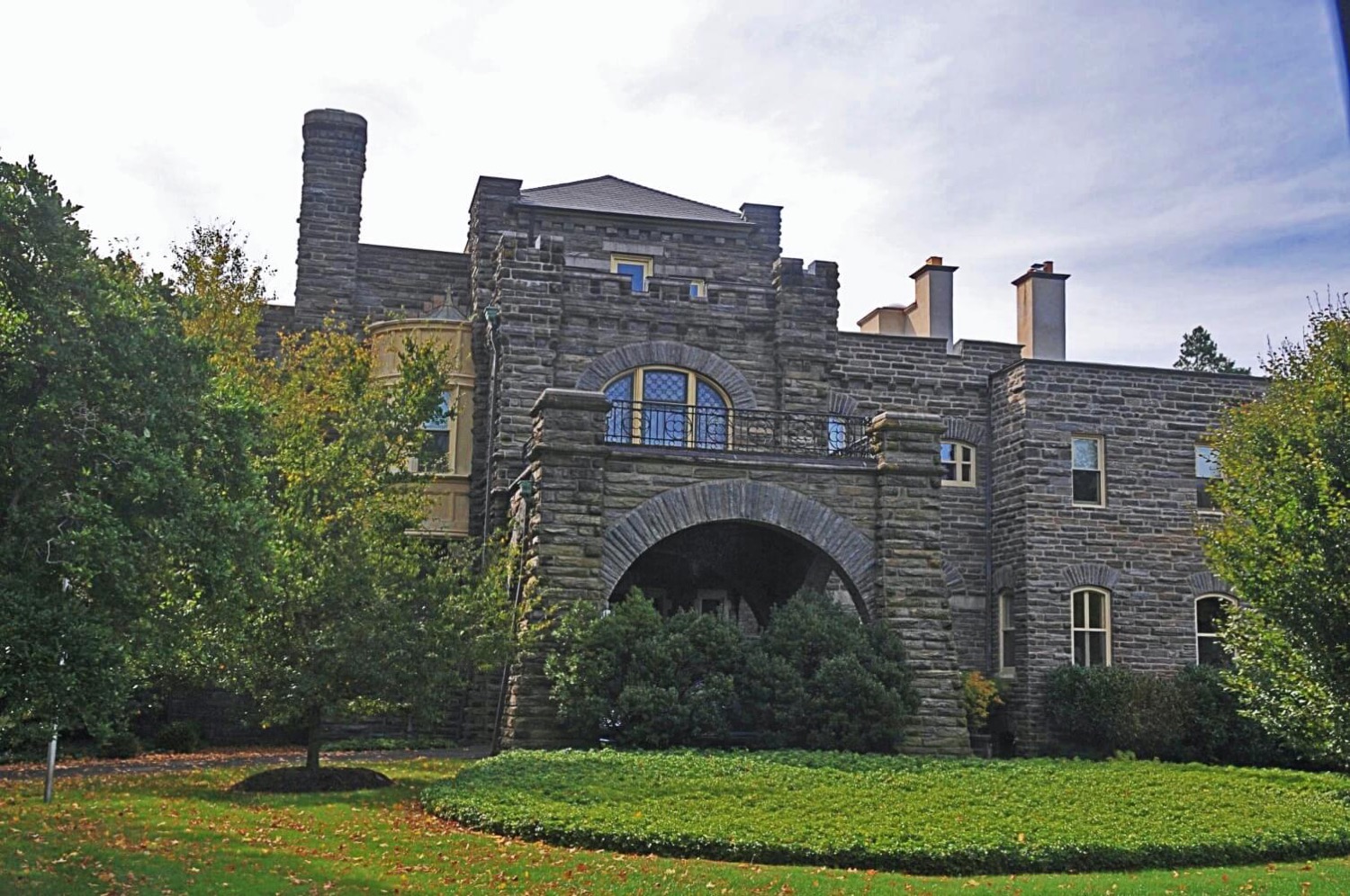Bryn Athyn Cathedral
Montgomery County Pennsylvania Unites States
castle, chateau
Bryn Athyn Cathedral is the episcopal seat of The General Church of the New Jerusalem, a denomination of Swedenborgianism
Previous names
Bryn Athyn Cathedral
Description
Bryn Athyn Cathedral is the episcopal seat of The General Church of the New Jerusalem, a denomination of Swedenborgianism. The main building is of the Early Gothic style, while the adjoining structures are of a transitional period reflective of a combination of both Gothic and Norman styles. The exterior appearance of the Cathedral itself is reminiscent of Gloucester Cathedral in England.
The Cathedral is located in Bryn Athyn, Montgomery County, Pennsylvania just outside the city of Philadelphia. Bryn Athyn is also the site of the General Church affiliated Academy of the New Church, which publishes Swedenborgian literature, and is the parent organization of a high school, a four-year college (Bryn Athyn College of the New Church), a theological school, and the Emanuel Swedenborg Library.
History
The Cathedral was constructed from 1913-1919. The Cathedral's initial design was by the Boston architecture firm of Ralph Adams Cram. The planning of the Cathedral began under the direction of William Fredrick Pendleton, the Bishop of the Church, and John Pitcairn Jr., president of the Pittsburgh Plate Glass Company (now PPG Industries), who was the major benefactor donating the property and much of the funds to construct the cathedral.
Raymond Pitcairn, John Pitcairn's son, became involved with the project and worked with the firm of Ralph Adams Cram. As time passed, the architecture firm became less involved with the work leaving Raymond Pitcairn in charge. Mr. Pitcairn realized that the workers and artisans working on the cathedral should be directly employed by the church and that creative changes by artists and builders working together which happen during the design process should be nurtured rather than thwarted. This led to some very unorthodox construction practices. For example, rather than relying on blueprints and plans, almost every aspect of the design was made into scale models where Mr. Pitcairn and the workers could study, review and embellish their ideas before actually constructing them.
Another aspect of the cathedral which is unusual is that asymmetries and irregularities were planned into the building as it was built. This is largely the result of Raymond Pitcairn's attendance at a 1915 lecture by William Goodyear who stated that irregularities and asymmetries in medieval buildings were not errors but were carefully planned in the structures.
The stained glass windows of Bryn Athyn Cathedral are worthy of note. The medieval method of creating stained glass, namely of melting various pigment and metallic oxides into the glass itself and then having a glass blower create a disk of glass with varying degrees of thickness and brightness, was revived. The first glass was blown in 1922 and the last was created in the 1940s, however all the windows themselves were not completed till the 1960s. The windows are essentially of three designs:
Biblical figures represented in monumental scale;
Medallions depicting events either in the life of Christ or the old testament prophets; and
grisaille windows of geometric design and pearl-like translucency which fill the cathedral with light.
Most of the metal in the cathedral is Monel Metal.
The Ezekiel Tower, located south of the main 150 ft tower, was built between the years 1920-1926. The Choir Hall and Michael Tower lie to the north of the main cathedral. This addition was completed in 1929 and even though this is the last completed portion of the complex, its architecture is from the earliest period.
Right next to the college, the library and the cathedral is the Academy-affiliated Glencairn Museum. Originally the private residence of Raymond Pitcairn, this castle-like building now houses a collection of mostly religious artwork from around the world and is open to the public.
The cathedral is part of the Bryn Athyn Historic District, which was listed as a National Historic Landmark on October 7, 2008.
Useful information
Free
5.00 USD
Cathedral Park
Julia.Schmucker@bacathedral.org
- Guided tours are offered Tuesday through Friday
- Accessible for wheelchairs
External links
Nearby castles

Glencairn Museum
Montgomery County
0.2km
castle, chateau

Grey Towers Castle
Montgomery County
9.9km
castle, chateau

Druim Moir Castle
Philadelphia County
15.4km
castle, chateau

Mercer Museum
Bucks County
20.1km
castle, chateau

Eastern State Penitentiary
Philadelphia County
20.7km
castle, chateau

Woodmont
Montgomery County
20.9km
castle, chateau

Fonthill
Bucks County
21.4km
castle, chateau

